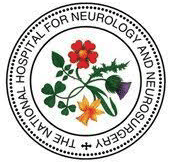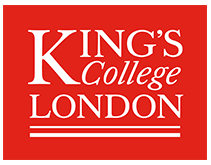Neuropsychiatry
Clinical Neuropsychiatry Services
As a neurologist trained at the National Hospital and Institute of Neurology in North London I was privileged to practice both in an undergraduate Medical School and in a postgraduate Psychiatric Hospital and its academic Institute of Psychiatry in South London. The latter environment inevitably led me into the field of Neuropsychiatry. I provided a neurological ward referral service to patients with psychiatric disorders and contributed patients and opinions to Neuropsychiatric Case Conferences.
I also ran a joint inpatient and outpatient Epilepsy service at the Maudsley Hospital, together with my psychiatric colleagues Professor G. Fenton and Professor P. Fenwick for patients with epilepsy and psychosocial comorbidities.
Key References:
Reynolds E.H., Trimble M.R. Epilepsy and Psychiatry. Churchill Livingstone, Edinburgh; 1981.
Reynolds E.H., Trimble M.R. Epilepsy, psychiatry and neurology. Epilepsia 2009; 50 (supplement 3): 50-55.
Academic Neuropsychiatry
Epilepsy has long been situated at the interface between neurology and psychiatry. Epilepsy itself is comprised of many age-related syndromes, several but not all with a high incidence of comorbidities, including variously and in varying degrees brain pathology, cognitive impairments, psychological disorders (especially depression and anxiety) and social stresses, stigmatisation and disadvantages. Furthermore electrically-induced convulsions or ECT can be a very effective treatment for some forms of severe psychotic or drug-resistant depression. Thus the study of epilepsy can be a window into the functions of both brain and mind.
With my psychiatric and psychological colleagues and research team I studied the previously underestimated influence of AED’s on cognitive function, behaviour and psychological disorders in patients with epilepsy, incorporating blood level monitoring of the drugs and drug-induced impairment of folate and one carbon metabolism. We have also examined the interaction of the drug effects with other biological and psychosocial factors in precipitating psychological or psychiatric comorbidities in patients, especially those with temporal lobe epilepsy. See Section on Epilepsy.
Of particular interest has been the concept of biological antagonism between convulsions and some forms of mental illness, illustrated for example by the fact that severe folate deficiency may cause depression and that folate derivatives have excitatory properties, which can be utilised experimentally to induce seizures. Other examples include: 1) the precipitation of seizures by some antidepressant drugs or phenothiazines, and 2) AEDs that interfere with GABA metabolism may also induce depression, e.g. vigabatrin.
As discussed in the Section on Metabolic Diseases of the Nervous System my interest in the neurology and psychiatry of folate, vitamin B12 and one carbon metabolism has focussed in particular on subgroups of major depression and dementia, in which my colleagues and I have found evidence of impaired folate, SAM and methylation/monoamine metabolism. We have established that there is a neuropsychiatry folate deficiency which has much in common with that of vitamin B12 deficiency, and we have confirmed that excess folate, especially in the presence of vitamin B12 deficiency, is also harmful to the nervous system.
Metabolic diseases of the nervous system, such as folate or vitamin B12 deficiency, can cause a variety of neuropsychiatric syndromes, depending on predisposing genetic or associated factors. Likewise, psychiatric diagnostic categories, such as major depression or dementia, may be precipitated or caused by a variety of metabolic causes. In subgroups of major depression and dementia there is evidence of treatable disturbances of one carbon and methylation metabolism. There is some evidence that optimum prophylactic treatment with folate and vitamin B12 may reduce the risk of later dementia and that methylation is fundamental to mood, cognitive function and aging.
Key References:
Trimble M.R., Reynolds E.H. Anticonvulsant drugs and mental symptoms: a review. Psychol.Med. 1976; 6: 169-178.
Reynolds E.H. Epilepsy and schizophrenia. Relationship and biochemistry. Lancet 1968; 1: 398-401.
Reynolds E. Vitamin B12, folic acid and the nervous system. Lancet Neurol 2006; 5: 949-960.
Structure and Function in Neurology and Psychiatry
In the 17th and 18th centuries so-called ‘nervous diseases’ or ‘neuroses’ i.e. disorders of function of the nervous system, included a mixture of modern neurology and psychiatry, e.g. dementia, mania, melancholia, hysteria, hypochondriasis, convulsions, chorea and all forms of paralysis. In the middle of the 19th century the triumphs of neuropathology and the clinico-anatomical method led to the evolution of neurology as a separate ‘organically’ based discipline associated with the concept of structural disease and functional localisation. The remaining unexplained mental disorders, including so-called ‘psycho-neuroses’, evolved at the turn of the 19th century within two separate disciplines, i.e. organic or psychodynamic psychiatry, the latter influenced by the psychodynamic theories of Jung, Freud and others. In the late 20th century with the growth of neuroscience and its application to mental disorders, together with a greater awareness of the impact of psychological and social factors on brain function and neurological diseases, there has been a convergence of neurology and psychiatry into a growing new discipline of neuropsychiatry occupied by both psychiatrists and neurologists. Neurology is no longer viewed only as synonymous with structural diseases of the nervous system. Neurological patients have complex dynamic disorders of function of the nervous system, whether or not structural disease is present. Likewise psychiatric patients have complex disorders of psychological and social function, whether or not structural disease is present. The interface between brain, mind and self remains the greatest outstanding challenge for both neurologists and psychiatrists. Nowhere is this better illustrated than in the still mysterious disorder of hysteria, now more often called ‘functional neurological disorder’.
Key References:
Reynolds E.H. Structure and function in neurology and psychiatry. Brit J Psychiatry 1990; 157: 481-490.
Reynolds E.H. The historical evolution and future of neurology and psychiatry. J. Neurol Neurosurg Psychiatry 2015; 86: 1386-1388.
A Bridge between Neurology and Psychiatry
As a neurologist working at a Psychiatric Hospital and its academic Institute of Psychiatry I took the opportunity to collaborate with Maudsley psychiatrists, as well as B. Toone at Kings College Hospital, M. Carney at Northwick Park and Professor M. Trimble at the National Hospital, in building bridges between our two disciplines, especially in the field of epilepsy and metabolic diseases of the nervous system. Three of the books I have edited included the word ‘psychiatry’ in the title. Interestingly in the 1990s the Institute of Psychiatry changed its name to the Institute of Psychiatry, Psychology and Neuroscience. The concept and word ‘neuroscience’ emerged in the UK in the MRC Neuropsychiatry Research Unit in the 1960’s and rapidly permeated the Institute of Psychiatry in the 1970’s and 1980’s influenced in part by the arrival of a new Department of Neurology within the Institute.

In 1985 I was elected a Fellow of the Royal College of Psychiatrists. In 1987 I was a founder member of the British Neuropsychiatry Association (BNPA) and served as the first neurologist on the BNPA Committee under the Chairmanship of Professor A. Lishman. I presented my views on structure and function in neurology and psychiatry at the first meeting of the new BNPA in October 1987.
Key Reference:
Reynolds E.H., Trimble M.R. The Bridge between Neurology and Psychiatry. Churchill Livingstone, 1989.
Reynolds E.H. A bridge between neurology and psychiatry. Epilepsy and Behaviour 2016; 65: 56-59.







